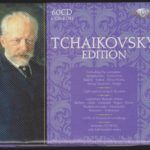The premiere of Tchaikovsky’s Third Symphony took place in 1875, a year that had not begun well for the composer. After months of effort, he completed his First Piano Concerto and played it for Rubinstein, who, contrary to his usual effusive support, found nothing kind to say. It was the first major conflict between mentor and protegé, and Tchaikovsky was deeply hurt by Rubinstein’s cold words. He spent summer vacation licking his wounds at the Kamenka estate belonging to his sister and her husband. There, he found the spirit to compose again, and in less than two months, wrote a symphony from start to finish. This was the first of his symphonies to entirely meet his own approval, the first that he did not judge to need extensive revision. Rubinstein, too, thought highly of the new score. Forgetting his cruel reception of the piano concerto, he agreed to give the new symphony its premiere and conducted the work in Moscow that fall.
This symphony carries the nickname ‘Polish’. The name was not chosen by Tchaikovsky himself, but rather by the English conductor Sir August Manns, who led the work in a London performance. Manns was inspired in his choice of labels by the Polish dance rhythms of the final movement, but in fact, those rhythms are not to be found elsewhere in the work. One might just as well have called the symphony
‘German’ for its alla tedesca second movement, or ‘Russian’ for the composition’s various other themes. Rather than imagining that the Third Symphony speaks of this or that nationality, a listener would be better served to view the piece as representative only of Tchaikovsky himself and of the way in which he was able to synthesize the finest elements of a wealth of styles so as to produce a voice that was uniquely his own.
Hamlet – Fantasy Overture
Shakespeare’s present reputation as one of the greatest authors ever dates from the early days of Romanticism. Before that he didn’t fit into the aesthetic principles of Classicism. Romanticism, in a sense an anti-Classical movement, adored his work for the unpredictability of his characters, the non-schematic approach to form, the impossibility of knowing a person completely and the difficulty for man to make and defend decisions. Shakespeare’s Hamlet was the archetypical romantic persona and consequently brought to life in many art forms. When Tchaikovsky outlined the piece (1888–1891), he also explained that he was inspired by the character Fortinbras in the play. Three years later he wrote some incidental music for a performance of the play in Paris. Afterwards he revised his Hamlet Overture and included material from the incidental music. Maybe the mix of an older form with new added elements explains the difficulty contemporaries had in explaining the structure of this music.
Emanuel Overbeeke
01. Symphony No. 3 in D major, ‘Polish’, Op.29 – I. Introduzione e allegro; moderato assai (Tempo di marcia funebre); allegro brillante
02. Symphony No. 3 in D major, ‘Polish’, Op.29 – II. Alla tedesca; allegro moderato e semplice
03. Symphony No. 3 in D major, ‘Polish’, Op.29 – III. Andante elegiaco
04. Symphony No. 3 in D major, ‘Polish’, Op.29 – IV. Scherzo. Allegro vivo
05. Symphony No. 3 in D major, ‘Polish’, Op.29 – V. Finale. Allegro con fuoco (Tempo di Pollaca)
06. Fantasy Overture in F minor for Orchestra, ‘Hamlet’, Op.67a
Tchaikovsky Symphony Orchestra of Moscow Radio
Vladimir Fedoseyev
